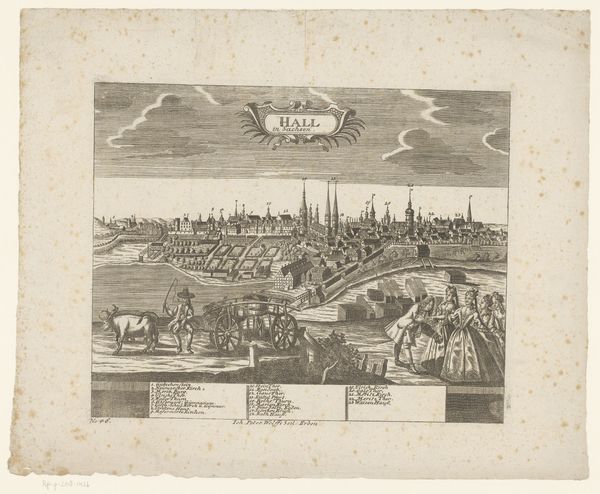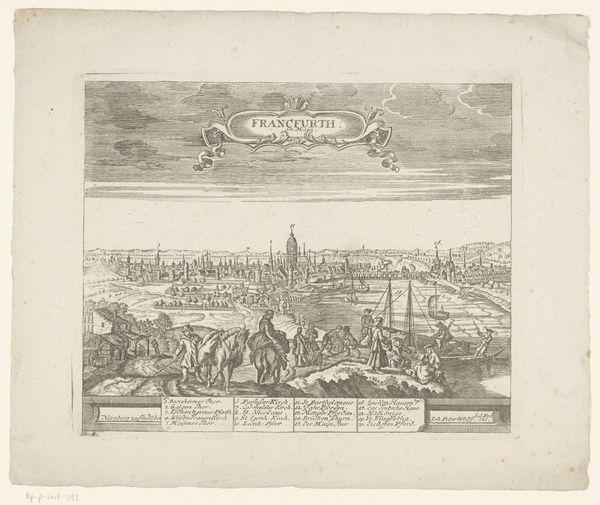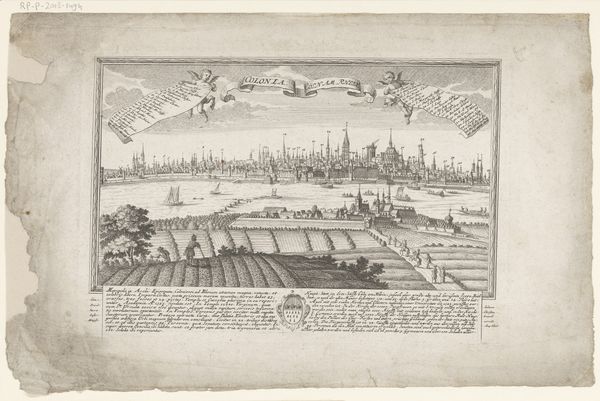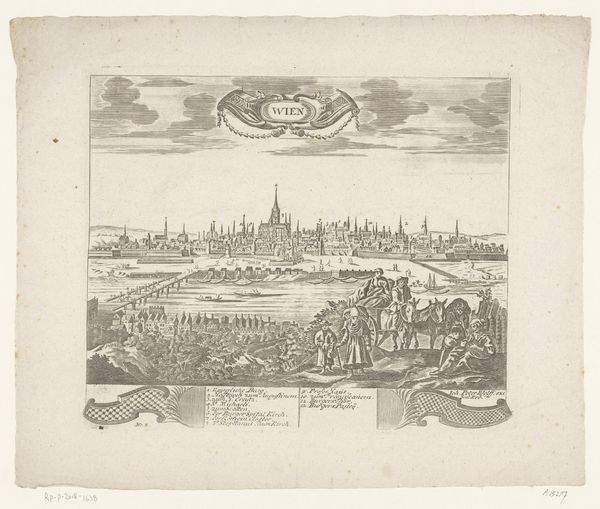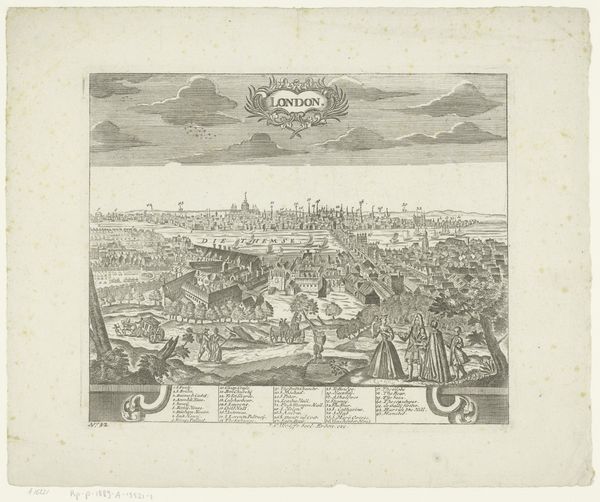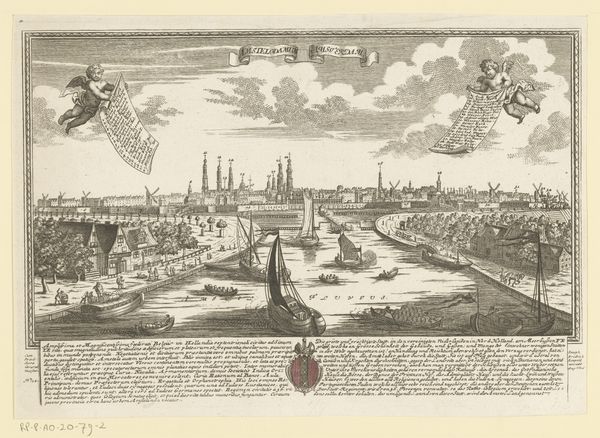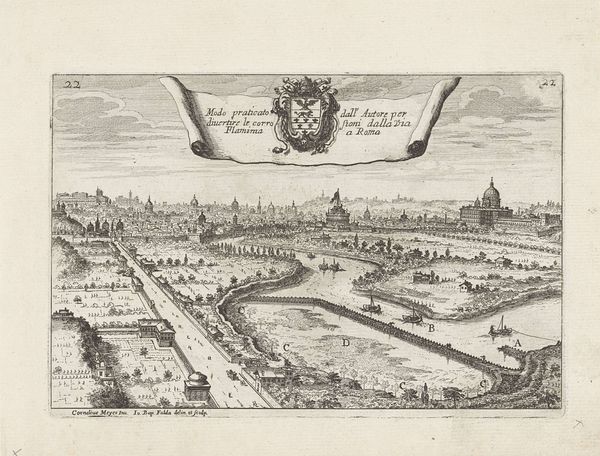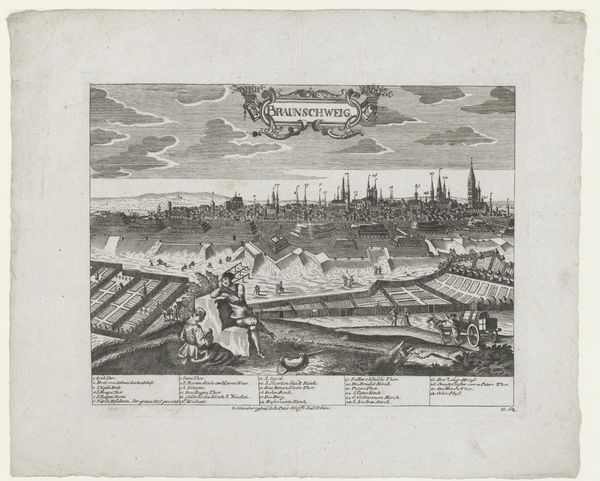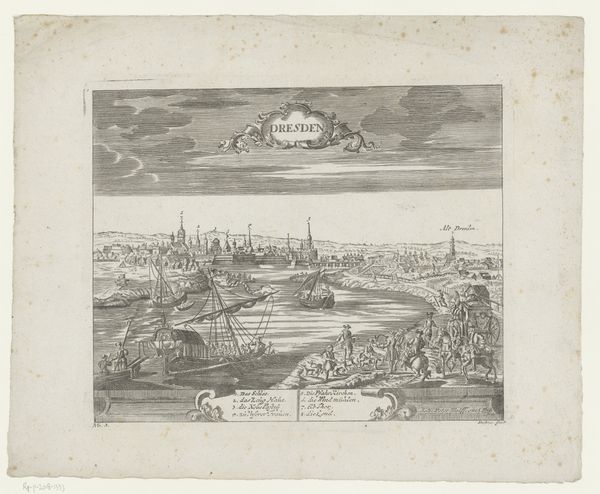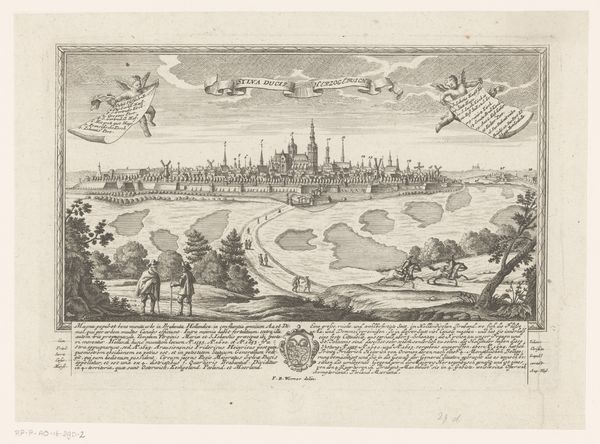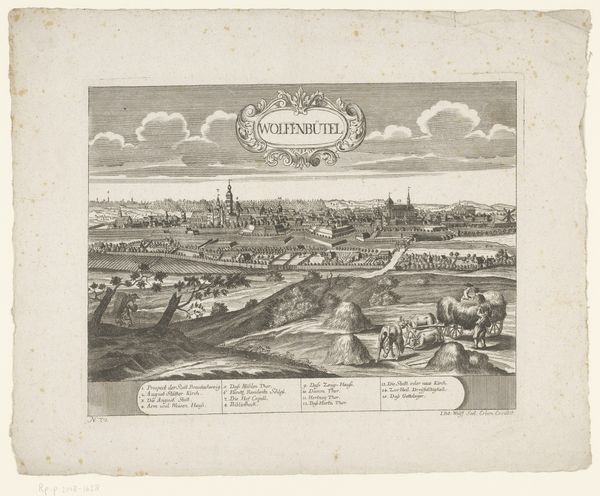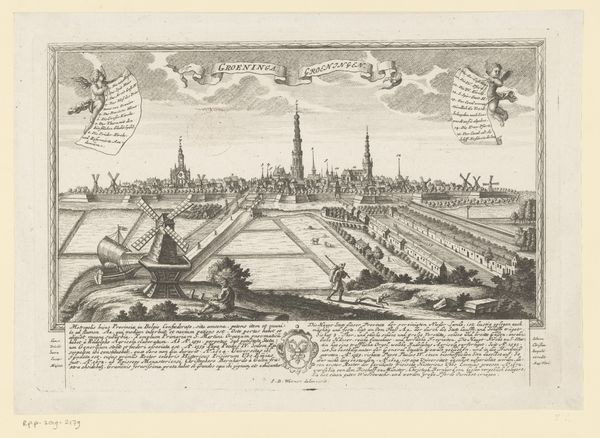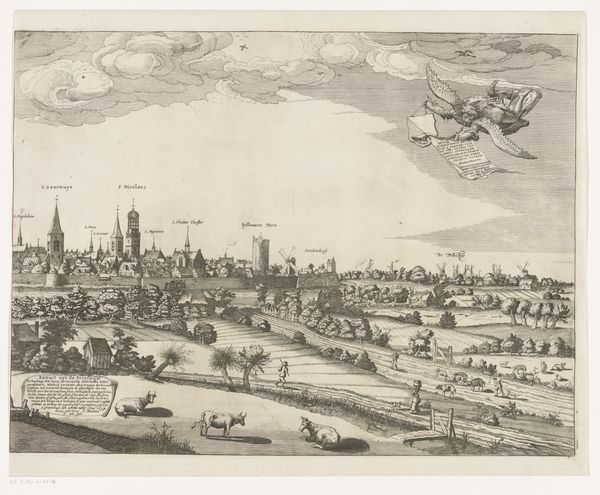
engraving
#
dutch-golden-age
#
landscape
#
cityscape
#
engraving
Dimensions: height 278 mm, width 341 mm
Copyright: Rijks Museum: Open Domain
Editor: This is "Gezicht op Amsterdam," an engraving made after 1711 by Johann Christoph Dehne. The details are so intricate! The scene feels busy, yet somehow orderly. How do you interpret this work? Curator: The image, to me, speaks of Amsterdam’s complex socio-economic tapestry of the time. Notice the prominence of the waterways, the ships – how might this point to Amsterdam as a key player in global trade networks, including those rooted in colonial exploitation? Consider the figures depicted, seemingly engaging in commerce and leisurely activities. Whose stories are amplified here, and whose are conspicuously absent? Editor: I hadn’t really considered the colonial aspect so directly. The city does look prosperous, almost idealized. Curator: Exactly. It presents a specific narrative. The architectural precision, those soaring church towers—who benefits from such structures, and whose labor built them? Think about the engraving as a form of propaganda. It visually reinforces existing power structures and perhaps glosses over the lives of those marginalized by the very systems that made Amsterdam wealthy. Editor: So, seeing the image not just as a landscape, but as a statement about class and colonialism? Curator: Precisely! We should look beyond the picturesque view and interrogate the social and political currents that shaped its creation and reception. Who was this image created for and what kind of stories does it obscure from view? Editor: I’m definitely looking at it differently now. Thanks for sharing your insight! Curator: My pleasure. I've also found it so worthwhile to have this dialogue.
Comments
No comments
Be the first to comment and join the conversation on the ultimate creative platform.
